Logan Lab Results for 2016
Adam R
7 years ago
Featured Answer
Comments (25)
reeljake
7 years agoAdam R
7 years agoRelated Discussions
Logan Lab Results - with Logan Recommendations
Comments (6)Mind you, I always think Logan's evaluations are a little too aggressive for the average lawn, but I completely agree with them on what to add (I just differ on how much and how quickly this should be added). Let's rewrite this for stuff you can get at the Home Depot (or whatever your local big box store is there). At least as far as the P goes. For K, I'd contact a local landscape or smaller garden shop and see if they'll order potassium sulfate (0-0-50) for you. It's the gentlest way of adding potassium, but even so we're not going to push it. They're really not kidding about the gypsum due to the sodium discussed below. Also, they didn't mention iron and should have. Sodium 3.2%/3.8%: This is incredibly high and going to be toxic to sodium-sensitive plants. Fortunately, most grasses are comparatively sodium tolerant, but this is cutting into your lawn quality. Given your high EC and the pounds per acre total (200 range), fairly large amounts of gypsum will be needed to dispel this. Gypsum turns bound sodium ions into sodium sulfate, a salt that washes away easily, and re-binds calcium to the soil. On average, this will tend to lower your pH a little bit. Iron 80-ish: With your pH and grass type, this isn't deficient but isn't going to produce very good color. Whenever you like, regardless of anything else going down, you can apply Milorganite at bag rate to slowly raise your iron and gently feed the lawn (organically, which won't over-amplify your starter or nitrogen applications). While this'll slowly raise your organic matter percentage, you don't really need much help in that department. Your OM levels are fine, but higher is always better within reason. Recommendations: July 1: Starter fertilizer at bag rate on both tested areas. 10 pounds per thousand square feet of gypsum in both areas. July 15: Potassium sulfate at 2 pounds per thousand on both tested areas. August 1: Starter fertilizer at bag rate on both tested areas. 10 pounds per thousand square feet of gypsum in both areas. August 15: Potassium sulfate at 2 pounds per thousand on both tested areas. September 1: Starter fertilizer at bag rate on Outside Lawn only (nitrogen fert on the rest). September 15: Potassium sulfate at 2 pounds per thousand on both tested areas. October 1: 10 pounds per thousand square feet of gypsum in both areas. October 15: Potassium sulfate at 2 pounds per thousand on Center Lawn only. April 15, 2016: Potassium sulfate at 2 pounds per thousand on Center Lawn only. May 15, 2016: Potassium sulfate at 2 pounds per thousand on Center Lawn only....See MoreNeed some help with Logan Labs soil test results
Comments (11)Overall, this isn't a bad test at all. There are some things that require fixing, some that should be adjusted, and many that are just fine. It's good you used the starter on her lawn; she needed it! I'll account for the usage in my calculations and recommendations, assuming you went at bag rate (1 pound of P2O5 equivalent). Sample Depth 3: Four is the normal sampling depth, but that's no big deal. I'll adjust your answers to match a 4" horizon. Exchange Capacity 7.5: Silty sand, probably. The soil holds a tolerable level of resources and testing every other year will be sufficient to make sure nothing's going awry once it's adjusted. pH 6.4: Right where it should be, which is because most of the resources that generate pH are right where they should be. I'll want to adjust a few of them a little bit, but will do so in a relatively pH neutral manner. Organic Matter 4.8%: Nicely in the Good range. Certainly mulch mow, mow all fall leaves, and feed organically if you want, but this is not an emergency. The EC of the soil is high enough that there's no reason to specifically work on organic matter to raise the EC. Sulfur 11: A nice answer, with plenty of margin for adding sulfate-based chemistry to adjust things. I don't need much margin. Phosphorus 77 (103 adjusted): Low, and definitely impacting lawn quality. Target here will be 200. To adjust this, we use starter fertilizer, and my recommendations are below. Calcium 64.6%: Right in optimal range, although with a lower EC soil I'd like to adjust this a tiny bit (that 50 pound [67 pound adjusted] shortage is minor, but...) For this, we use gypsum, which is available at many big box stores, landscape shops, and garden stores. Get the pelletized, it's much easier to handle, if available (and it usually is). My goal here is to nudge the calcium levels closer to 70%. Magnesium 15.4%: Perfect. No magnesium is required or desired. Potassium 5.0%: Perfect (the previous test was wrong on this, I think). No potassium is required or desired, and this is absolutely optimal. Sodium 1.0%: Perfect. Sodium does nothing for a lawn, so very low levels are desirable. The gypsum might reduce this a tiny bit and, if so, great. If not, no problem. Minor Elements: Boron is deficient. The rest are fine, although if you wish to use Milorganite (high iron), that would probably improve the lawn color a little bit over time. Boron <0.2: Deficient. We use Milorganite as a carrier and 20 Mule Team Borax as the boron source. You can purchase 20 Mules at the grocery store in the laundry section. In a wheelbarrow or the like, dump the Milo. Spraying very, very lightly with water (I use a spray bottle like the kind people use to damp their clothes when they iron) will help the boron stick. Add the recommended amount of 20 Mule Team Borax and stir, spraying occasionally to get the stuff to stick to the Milo. Then apply over the recommended area. So if going for bag rate Milorganite (1 bag per 2,500 square feet), you'd add 12.5 tablespoons of 20 Mule Team Borax. Recommendations: Seeding Time: Starter fertilizer at bag rate (you already did this). October 15: Starter fertilizer at bag rate. November 1: Apply 5 tablespoons (not a misprint) of 20 Mule Team Borax per thousand square feet. April 1, 2016: Apply 5 to 10 pounds of gypsum per thousand square feet (I'd prefer 7, actually, but anything in that range is just fine). Memorial Day 2016: Starter fertilizer at bag rate. Labor Day 2016: Starter fertilizer at bag rate....See MoreLogan Lab test results help
Comments (28)80 lbs / 5 k sq ft = 16 pounds per thousand square feet. That's a totally normal level of application, so I very strongly doubt there's any problem with that! (And we already know I always take the safest route, so you know I'm not being cavalier about it). Even going heavy by hand broadcast (something I do myself) shouldn't be an issue at all, but as you noted it can mat down the grass a bit. Where that happens, you can usually scratch it up a little bit to get the grass to stand and the alfalfa (or whatever you're using) to settle. Overapps of an organic are possible, but difficult. I mostly use soybean meal. In bad sections, I run over it with the spreader at 15 pounds per thousand, then usually take handfuls or double handfuls and spread them around in the area as well. Thirty per K? That's probably about right. Very tiny but very blank bits might get a whole lot more than that. Then if there's any left in the spreader at the end, I often run over the really bad sections again...and now we're up to 45 per K of soybean meal in some spots. They're too small to generate any real scent and I never notice it, but it does help the bluegrass fill back in at jig speed. The decay colors can be interesting, though!...See MoreSpring 2016 Logan Lab Results - Need Fertilizer Plan Help
Comments (3)Sorry for the delay, I've been a bit busy! California, Santa Ana, Bermuda grass. Got it. Nitrogen (under Other): I ignore these as they change hour by hour, by moisture level in the soil, temperature, and so on. In the future, don't bother with this test. Exchange Capacity 13: Most likely a fairly dense silt soil, which is great to have. This is a near-optimal EC as far as I'm concerned and only requires retesting about every 3 years once balanced. Organic Matter 2.4%: Fair. I wouldn't mind seeing this go up, so mulch mow, mow any fall leaves (if you get those there), and maybe feed organically if you wish. pH 7.5: A little high, but no barrier to a fantastic lawn. More below under Calcium, Magnesium, Sodium and Potassium. Sulfur 20: Normal! Phosphorous 97: Somewhat low. The target here would be 240 or so. We raise this using any starter fertilizer (get the cheapest, they're all pretty much the same). Recommendations below. Calcium 69.1%: On the high edge of normal, but normal (high Ca wouldn't do any harm anyway). None required or desired, and this is helping to set off your high pH. Magnesium 20.4%: Extremely high. Although still fine, for a soil with an EC of 13 would only require about 11-12% Mg. Excess Mg raises soil pH, and tightens soils and makes them hard to dig and rock-like when dry. I'd avoid anything that lists magnesium in it for quite some time to come! Potassium 3.2%: This is a touch trim, but nothing severe, and I'm going to ignore it this year. Excess K isn't a problem and doesn't raise pH that much, but I'd still rather avoid it. Sodium 3.4%: A little high. Sodium sharply raises pH, and serves no useful purpose. Excess Na is toxic. We could dispel it...at the cost of adding even more calcium, so I'm inclined to let it ride this year. I'd definitely advise against using softened water on the lawn, but sodium is frequently from salt spray or natural in the soil. Perhaps you could tell us about conditions? Minor elements: Boron is a touch low but nothing to worry about. Most others are OK, although all tend to be sky high (your copper levels might be a slight problem, but there's nothing we can really do about it, so...) Definitely avoid feed with micronutrients. You don't need them! Iron, however, is a bit low at 101. It's not severe, but may result in lighter colors in the lawn. You can always use Milorganite to feed the lawn and add iron (slowly). Recommendations April 1: Apply starter fertilizer at bag rate. May 1: Apply starter fertilizer at bag rate. September 1: Apply starter fertilizer at bag rate. October 1: Apply starter fertilizer at bag rate....See Morereeljake
7 years agomorpheuspa (6B/7A, E. PA)
7 years agoAdam R
7 years agomorpheuspa (6B/7A, E. PA)
7 years agoAdam R
7 years agomorpheuspa (6B/7A, E. PA)
7 years agoAdam R
7 years agomorpheuspa (6B/7A, E. PA)
7 years agoAdam R
7 years agodarktower00844
7 years agoAdam R
7 years agoAdam R
7 years agoAdam R
7 years agoreeljake
7 years agoAdam R
7 years agolast modified: 7 years agoAdam R
7 years agoAdam R
7 years agoj4c11
7 years agoAdam R
7 years agoAdam R
7 years agoj4c11
7 years agoj4c11
7 years ago
Related Stories
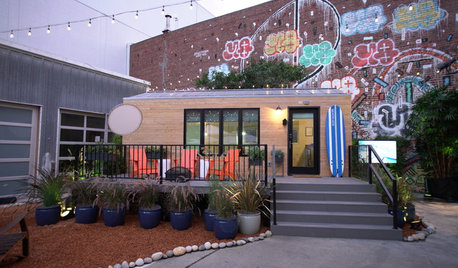
HOME TECHA Vision of the Future for the Smart Home
Intel, a smart-home platform developer, offers a peek into the tech firm's experimental ‘living lab’
Full Story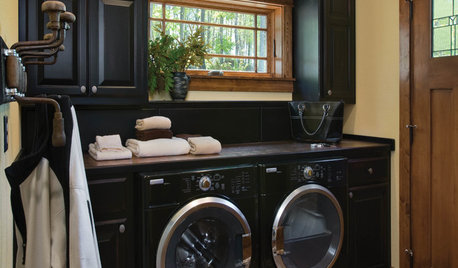
LAUNDRY ROOMSTop 10 Trending Laundry Room Ideas on Houzz
Of all the laundry room photos uploaded to Houzz so far in 2016, these are the most popular. See why
Full Story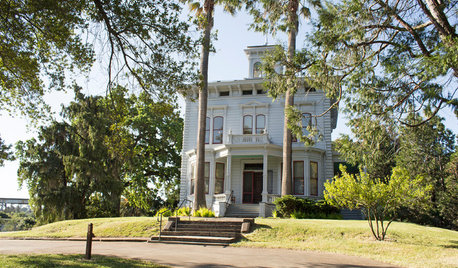
TRAVEL BY DESIGNThe Father of the U.S. National Parks Lived Here
Adventurer John Muir helped preserve the nation’s natural wonders. His California home shows his domestic side
Full Story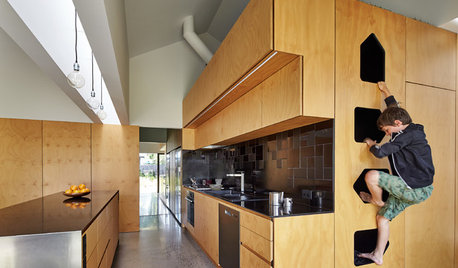
MOST POPULARKitchens Down Under: 20 Design Ideas to Inspire You
These popular Australian kitchens have exciting ideas to borrow no matter where you live
Full Story
HOUZZ TOURSMy Houzz: Midcentury Meets Vintage in the Mission
A San Francisco couple surround themselves with family heirlooms to add comfort and familiarity to their apartment
Full Story
KITCHEN DESIGNNew This Week: 2 Kitchens That Show How to Mix Materials
See how these kitchens combine textures, colors and materials into a harmonious whole
Full Story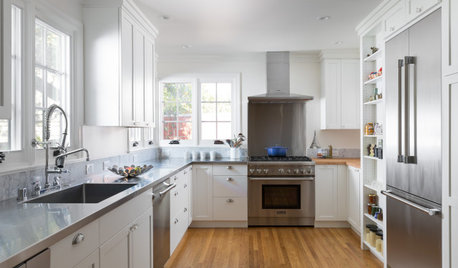
HOUSEKEEPINGHow to Clean Stainless Steel
Protect this popular kitchen material with a consistent but gentle cleaning routine
Full Story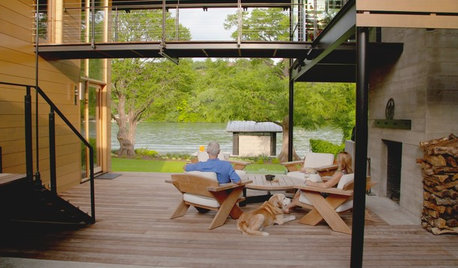
MODERN ARCHITECTUREHouzz TV: This Amazing Lake House Made a Couple’s Dream Come True
Step inside a dream home on Lake Austin, where architecture celebrating gorgeous views has a striking beauty of its own
Full Story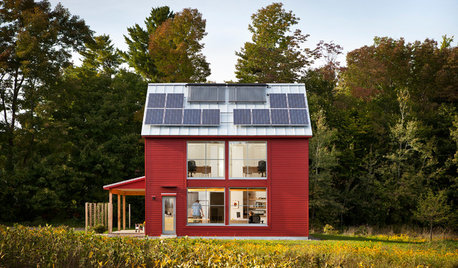
GREEN BUILDINGGoing Solar at Home: Solar Panel Basics
Save money on electricity and reduce your carbon footprint by installing photovoltaic panels. This guide will help you get started
Full Story
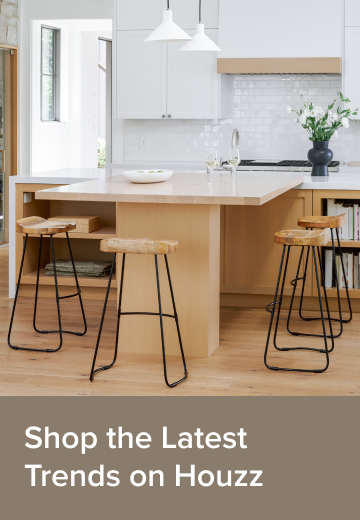
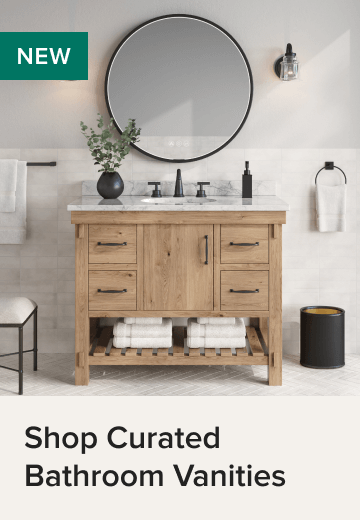

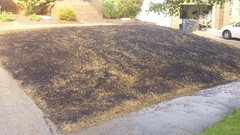

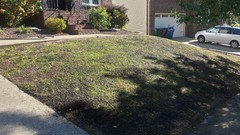


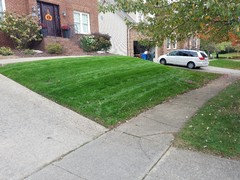
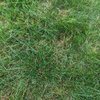

Adam ROriginal Author